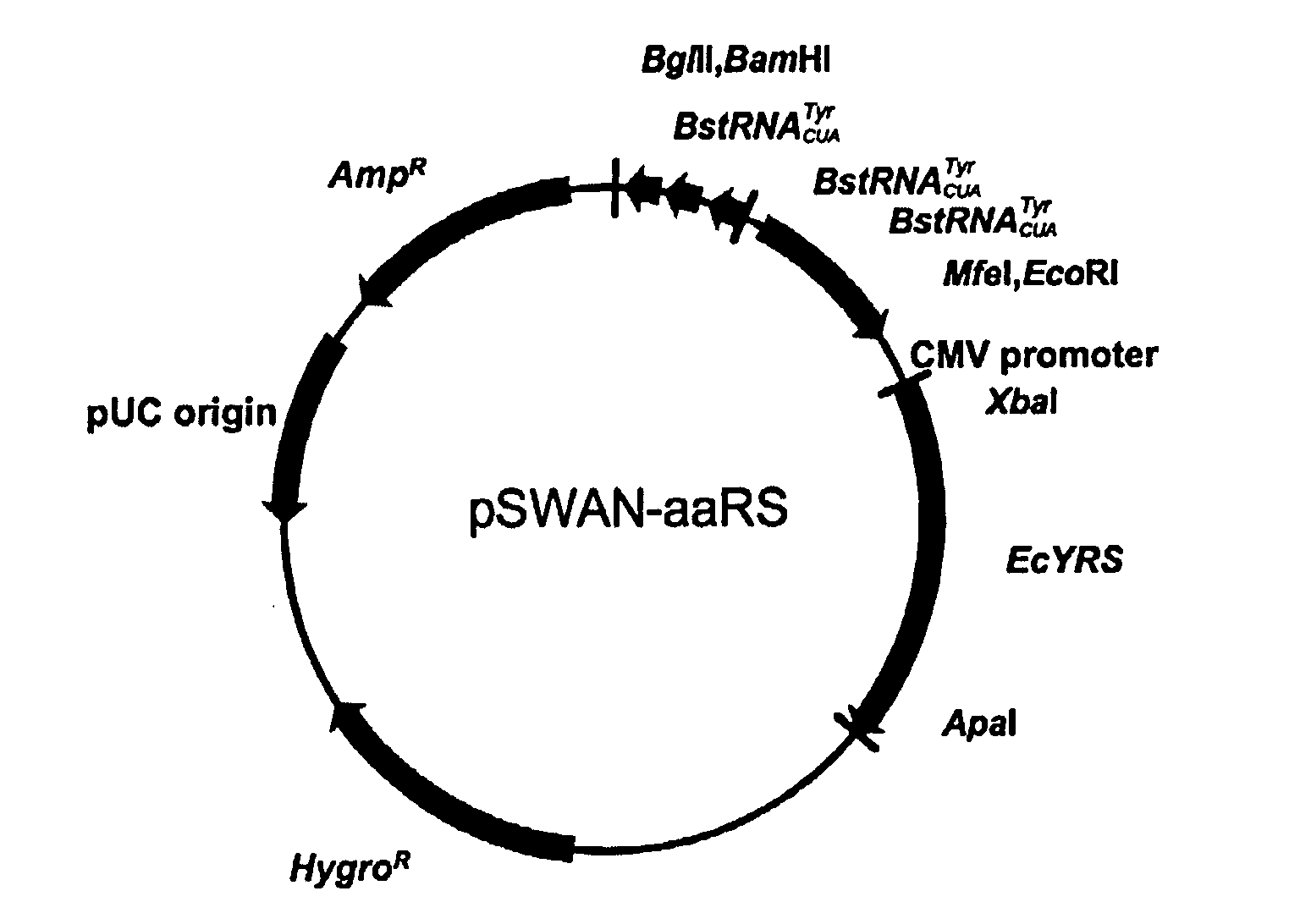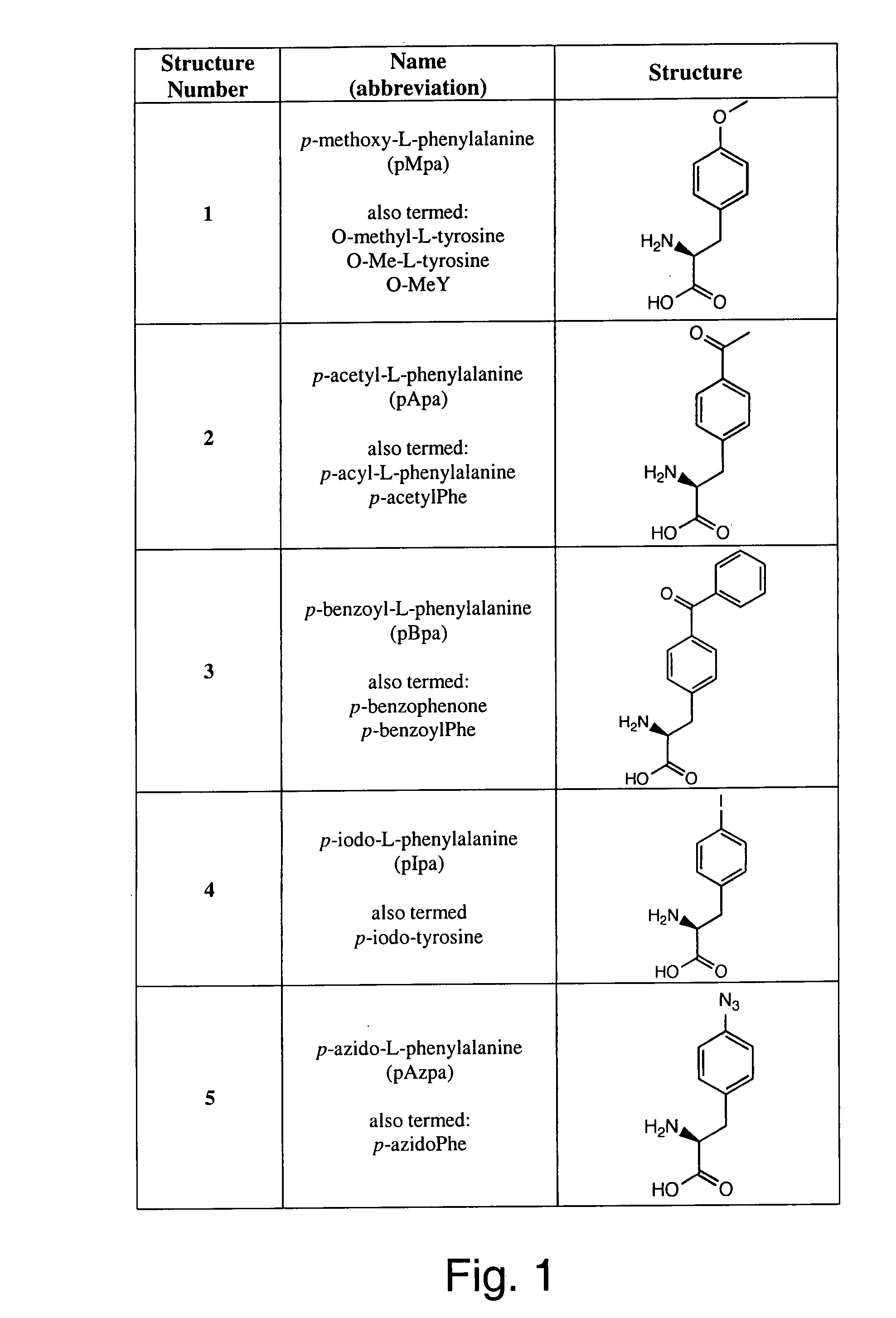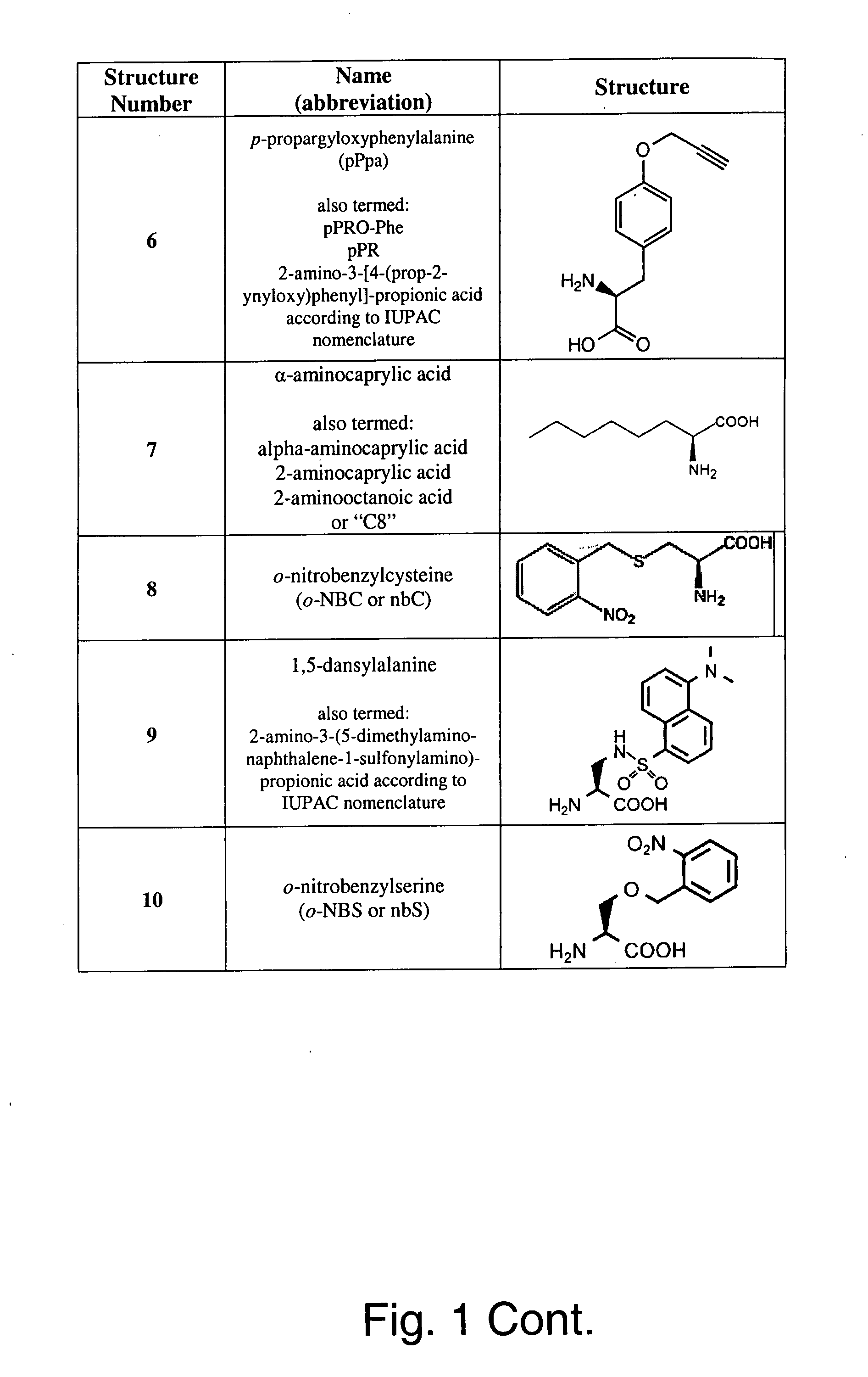Genetic incorporation of unnatural amino acids into proteins in mammalian cells
a technology of unnatural amino acids and proteins, applied in the field of translation biochemistry, can solve the problems of difficult prediction, less effective, severe limitation of the amount of protein that can be produced, etc., and achieve the effects of facilitating the introduction of biological probes, facilitating the synthesis of therapeutic proteins, and high translational fidelity
- Summary
- Abstract
- Description
- Claims
- Application Information
AI Technical Summary
Benefits of technology
Problems solved by technology
Method used
Image
Examples
example 1
Technical Limitations of Nonsense Suppression in Mammalian Cells by Non-Mammalian Translation Components
[0286]One strategy to genetically encode unnatural amino acids in mammalian cells would be to adapt the existing mutant tRNA / aaRS pairs that have been generated in Escherichia coli or Saccharomyces cerevisiae host systems. Because the tRNATyr identity elements in E. coli, which include the variable arm and G1:C72 base pair in the acceptor stem, are distinct from those in mammalian cells (Wang and Schultz (2004), “Expanding the genetic code,”Angew Chem Int Ed Engl 44:34-66; and Bonnefond et al. (2005), “Evolution of the tRNA(Tyr) / TyrRS aminoacylation systems,”Biochimie 87:873-883), the tRNA / aaRS pairs that have been used in bacteria are unfortunately not likely to be orthogonal in eukaryotic cells. In contrast, tRNAs in S. cerevisiae and mammalian cells are processed similarly and have the same identity elements (Bonnefond et al. (2005), “Evolution of the tRNA(Tyr) / TyrRS aminoacyla...
example 2
Creation of Novel Nonsense Suppression Systems in Mammalian Cells
[0287]To overcome the limitations in orthogonal tRNA expression described above, the present invention provides a general system that allows for the transfer of mutant suppressor tRNA / aaRS pairs evolved in yeast to be used in mammalian cells. This method and the novel orthogonal systems are demonstrated herein to efficiently introduce a number of unnatural amino acids into green fluorescent protein (GFP) in both rodent CHO host cells and primate (human) 293T host cells. Although these two cell types were used experimentally, the invention is widely applicable to mammalian host cells from diverse species.
Creation of a Novel Mammalian Nonsense Suppression System
[0288]The tRNAs in eukaryotes are transcribed by RNA polymerase III, which recognizes two conserved intragenic transcriptional control elements, namely, the A and B boxes (Sprague, Transcription of Eukaryotic tRNA Genes, AMS Press, Washington, D.C.; 1994). E. coli...
example 3
Demonstration of System Universality Using Six Unnatural Amino Acids
[0296]The generality of this orthogonal system was determined. In this test system, the ability of BstRNACUATyr and six EcTyrRS variants to incorporate a variety of corresponding unnatural amino acids into GFP37TAG in both Invitrogen™ T-REx™ CHO and 293 cell lines was determined. The six EcTyrRS variants were previously evolved in S. cerevisiae to encode the following unnatural amino acids:[0297]p-methoxy-L-phenylalanine (pMpa)[0298]p-acetyl-L-phenylalanine (pApa)[0299]p-benzoyl-L-phenylalanine (pBpa)[0300]p-iodo-L-phenylalanine (pIpa)[0301]p-azido-L-phenylalanine (pAzpa)[0302]p-propargyloxyphenylalanine (pPpa)
[0303]The structures of these unnatural amino acids are shown in FIG. 1; structures 1 through 6. The selection and isolation of the synthetase variants are described in, for example, Chin et al. (2003), “An expanded eukaryotic genetic code,”Science 301:964-967; Deiters et al. (2003), “Adding amino acids with n...
PUM
| Property | Measurement | Unit |
|---|---|---|
| mass shift | aaaaa | aaaaa |
| mass | aaaaa | aaaaa |
| mass shift | aaaaa | aaaaa |
Abstract
Description
Claims
Application Information
 Login to View More
Login to View More - R&D
- Intellectual Property
- Life Sciences
- Materials
- Tech Scout
- Unparalleled Data Quality
- Higher Quality Content
- 60% Fewer Hallucinations
Browse by: Latest US Patents, China's latest patents, Technical Efficacy Thesaurus, Application Domain, Technology Topic, Popular Technical Reports.
© 2025 PatSnap. All rights reserved.Legal|Privacy policy|Modern Slavery Act Transparency Statement|Sitemap|About US| Contact US: help@patsnap.com



